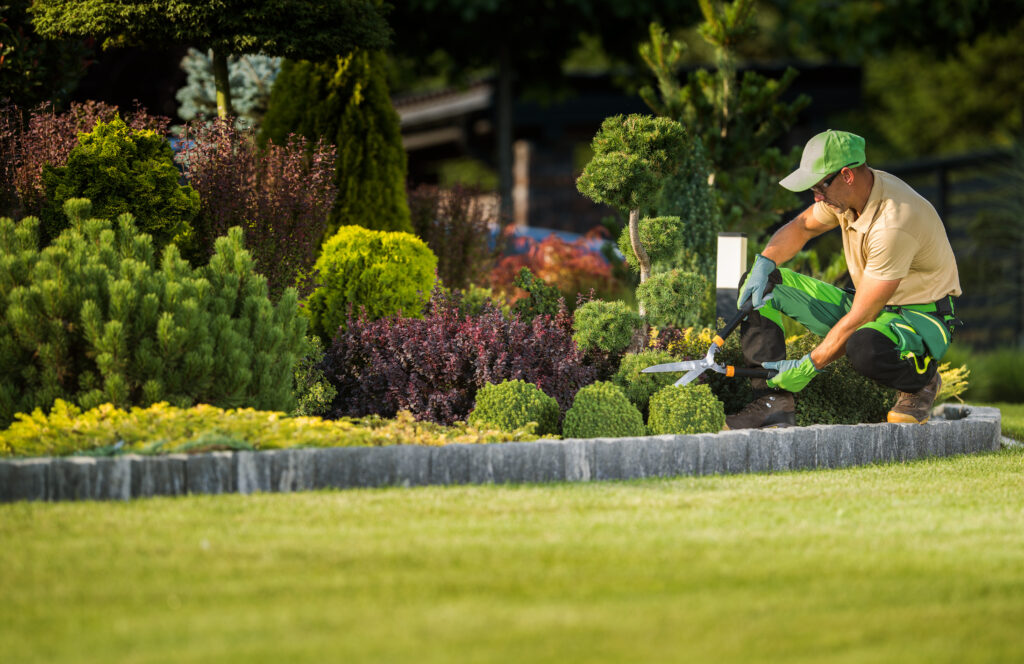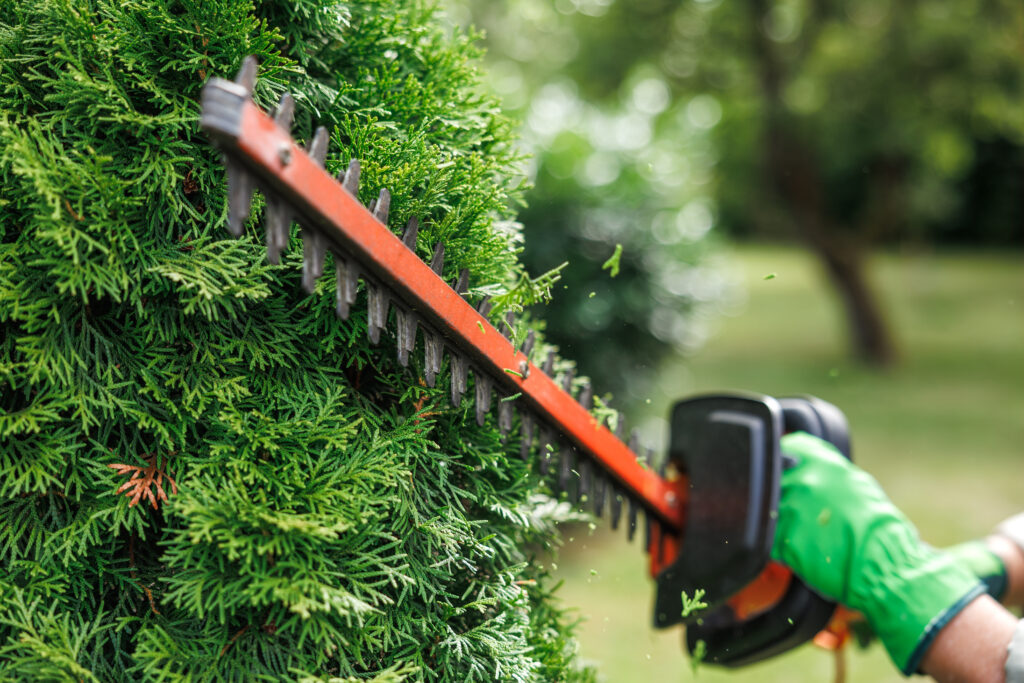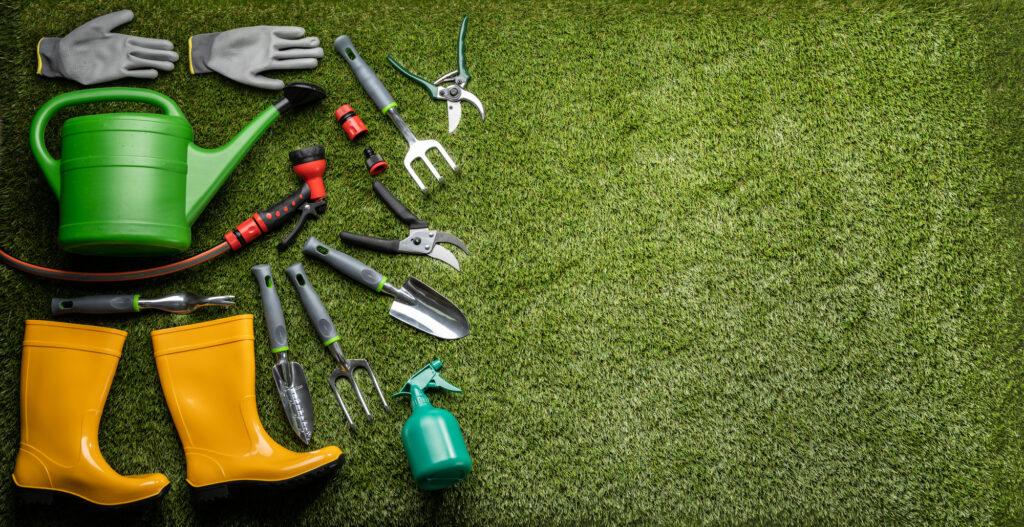Gardening and landscaping projects require proper tools tailored to the task at hand to ensure success. But with the plethora of equipment options available to the modern gardener, making informed selections can be overwhelming.
When choosing tools, you must carefully consider and assess factors such as garden layout, soil type, ergonomic design, durability, and versatility. You can strategically procure equipment that maximizes efficiency, sustainability, and ease of use through a comprehensive analysis of these key criteria.
This guide outlines vital considerations when selecting the right gardening and landscaping tools that yield optimal results.
Assess the Size and Layout of Your Garden
The best tools for gardeners and landscapers? It all depends on your requirements. But assessing the physical dimensions and layout of your gardening space is one of the most critical considerations when selecting equipment.
Whether cultivating a small 4×8 raised bed or tending a sprawling one-acre landscape, taking precise measurements of your growing area allows you to determine the exact scope of your needs. Factors like square footage, elevation changes, proximity to resources like water, spacing between planting beds, and potential obstacles are all vital details to analyze before making any tool purchases.
Small hand tools like trowels, cultivators, and pruners are most practical for compact urban gardens, as large equipment simply won’t comfortably fit within confined spaces. Using long handles also becomes challenging when gardening in close quarters between narrow planting beds. For these intimate gardens, compactness, ease of storage, and light weight tend to be prioritized in tool selection.
However, expansive gardens and landscaping projects often require heavy-duty tools equipped for prolonged use across larger areas. Shovels, hoes, wheelbarrows, and rakes with widened heads and extended handles allow you to move soil, compost, mulch, and debris efficiently with less strain on your body. The same rules apply when selecting powered equipment like gas-driven tillers and mowers – go bigger and more rugged.
Taking an honest inventory of your gardening environment by measuring and mapping things out may seem tedious, but it pays dividends in the long run. The last thing any gardener wants is to purchase a shiny new tool only to discover it’s ill-suited for the unique conditions of their green space once the work begins. Know your terrain and let it guide your picks.

Understand Your Soil Type
The composition and texture of the soil on your property have a major influence on which gardening tools will perform best. Soil can vary widely – from light, sandy types to dense, heavy clay formations. It pays to analyze the specific classification of soil you’ll be digging and planting in, so you choose equipment well-matched to those conditions.
There are simple DIY soil tests available, but for absolute accuracy, you can mail samples to a soil testing laboratory and receive detailed reports on your soil makeup.
For loose, sandy soils often found in drier regions, lightweight hand tools with thinner blades or tines tend to work well, as they require less strength and effort to penetrate and move the dirt. However, tools made with durable metals are still preferred over cheaper plastic models, which can snap under pressure. Rakes with wide, flexible heads are excellent for smoothing and grading sandy beds.
In clay soils abundant with dense minerals, gardening tools must work hard! Look for high carbon forged steel tools that can readily slice through compacted earth or break colds. Hand trowels and soil knives with thicker blades provide exceptional strength. Heavy-duty tillers and broad forks are extremely useful for preparing planting beds when clay soils predominate your landscape.
When assessing your soil composition, also analyze factors like natural pH levels, fertility, and drainage capacity. This will further help determine ideal plant choices and amendments to enhance the health of your soil and increase your garden’s productivity.
Consider Ergonomics
When we think of ergonomics, office chairs and keyboard trays may come to mind. However, ergonomic design is crucial when selecting gardening tools as well, especially since repetitive gripping and maneuvering of equipment can strain joints and muscles over time, leading to injury. Choosing tools specifically engineered for comfort, safety, and ease of use can profoundly impact your effectiveness and enjoyment while gardening.
Seeking out tools with cushioned, contoured handles or grips that allow a neutral wrist position can significantly reduce hand fatigue. Features like rubberized coatings prevent slipping and blisters during rigorous use. Extended handles on tools like shovels and hoes provide increased leverage with less back strain. Wheeled cultivators and seed spreaders also promote proper spinal alignment and reduce tension in the body.
Weight distribution is another key ergonomic factor. Some materials, like durable aluminum or composite plastics, are decidedly lighter than traditional wood or steel tools. Lighter tools reduce arm and shoulder fatigue, allowing for longer periods of comfortable use. They also require less effort to dig, chop, and lift soil and debris.
You can further customize tools for optimal user fit. Seek out handles with adjustable length settings to accommodate different statures or even left versus right-hand dominance. Additionally, interchangeable heads or multiple handle angles on essential tools like hoes maximize versatility in accomplishing different gardening tasks with less strain.
In assessing ergonomics, consider your own physical strength, stamina, age, and any pre-existing conditions that could be aggravated by repetitious gardening duties. Your personal characteristics should guide selections focused on function while minimizing injury risks.
Investing in ergonomically refined tools leads to better outcomes, less pain, and a longer and more fulfilling gardening lifestyle.

Quality Over Quantity
When building your gardening toolkit, the instinct to grab those discounted tools with flimsy plastic heads and splintering wooden handles can be hard to resist. But seasoned gardeners will advise investing extra dollars upfront in high-performing equipment made of robust materials built to endure years of rigorous use. In the long run, purchasing quality tools over cheap quantity pays exponential dividends.
Quality gardening tools feature hardened steel or alloy heads that maintain strength and sharp blades without excessive rust or pitting damage from outdoor exposure. Look for heat-treated heads and high-carbon or stainless-steel compositions. Strong metals flex slightly without cracking or breaking off from the handle during leveraged digging projects.
Handles built from solid ash, hickory, or composite polymers also indicate quality craftsmanship, as they resist splintering and cracking under intense pressure. Seek solid one-piece tool designs over hollow or multi-piece welded handles prone to failure at vital stress points.
When examining potential purchases, quality indicators to assess include:
- Precision grind and bevel of cutting blades
- Smooth surface finish and seamless construction
- Tightness of head to handle connection points
- Well-aligned components and overall weight balance
While premium gardening tools represent a more sizeable upfront investment, this path pays dividends through sustained high performance and dramatically extended tool lifespan, negating the need for regular replacement. Using well-designed tools also leads to improved accuracy and outcomes. With routine upkeep like sharpening, storage, and protective coating renewal, quality tools have functioned like new for decades. Ultimately, purchasing thoughtfully crafted tools, even at premium prices, yields better value over the full ownership lifecycle.
Choose Multi-Functional Tools
Every gardener knows that tool storage space is prime real estate. The struggle of picking through a messy, overstuffed shed to find that one specific trowel is all too real. An excellent strategy to combat clutter and optimize efficiency is to select multi-functional tools that integrate multiple implements into one.
All-in-one tools feature interchangeable components that convert a single base tool into specialized instruments for different garden tasks. For example, choose a power cultivator with attachments like pole saws, brush cutters, or aerators. Instead of purchasing four separate power tools, this one option fluidly adapts to accomplish jobs all around your landscape.
Similar convertible hand tools also abound—soil knives with fold-out horticultural shears, claw weeders with trowel scoops—the list goes on. Opting for these hybrid tools that fuse two to four tools in one slim design minimizes costs and storage needs substantially.
Multi-way garden tools take the integration up another notch, with handles that adjust angles to allow for hoeing, weeding, sawing, and digging without needing multiple implements. The single adjustable head aligns with the handle angle best suited for the current task.
When evaluating multi-functional tools, ensure all aspects integrate seamlessly and feel natural during use. Lower quality models often prioritize the quantity of features over refined design. Carefully assess weight balance, ease of conversions, and sturdiness across all configurations.
Investing in a few thoughtfully engineered combo tools for tackling various gardening needs not only clears out clutter but also allows you to complete the most essential projects with just one to two implements always close at hand.

Research Power Options
While hand tools allow for precise gardening finesse, power tools provide the heavy-hitting muscle for major landscaping preparation or maintenance. When selecting motorized options, the power source is a key factor weighing power, sustainability, and flexibility considerations.
Gas-powered tools like mowers and tillers harness the raw torque of combustion engines to plow through tough soil, grass, and overgrowth. The high output suited for large properties comes with noise, fumes, and reliance on fuel availability. Battery-powered alternatives eliminate emissions and noise pollution while allowing more precision. Cordless tools offer flexible mobility, but battery life and power can be limiting.
Corded electric tools connected to outlets also provide quiet, emissions-free power. Their unlimited energy capacity suits prolonged intensive use, but cord lengths restrict their working radius, and entanglement risks also exist. Manual-start generators can offset corded tool limitations in expansive outdoor sites.
Alternative power advances now integrate options like solar panels to eliminate fuel dependence. Models with hybrid gas/electric systems balance power needs with environmental factors across changing conditions.
To identify your optimal power portfolio:
- Assess your property’s scale along with plantings and tasks needing management via motorization.
- Calculate necessary power thresholds then cross-reference against environmental goals and budget.
- Seek the best intersection of attributes suiting your context.
Proper tool maintenance also plays a role – replacing worn spark plugs, keeping batteries charged, and wiping dust from solar cells. Learn what’s required to maximize longer-term viability. With routine care, your power tools will provide reliable strength year after year.
While the power tool spectrum spans everything from old-school gas guzzlers to eco-conscious alternatives, the beauty lies in each gardener customizing the power supply strategy fueling their lawn and garden needs.
Stay Up-To-Date With Modern Technology
In the dynamic world of gardening tools and equipment, transformative technologies continually emerge, taking efficiency, sustainability, precision, and ease-of-use to new heights. From robotic lawnmowers to moisture sensor irrigation control, cutting-edge innovations seem to advance every season. Savvy gardeners stay tapped into the latest breakthroughs to leverage modern advantages.
Smart gadgets and automation now permeate the gardening realm. Bluetooth-connected sensor systems track microclimate data and self-adjust watering schedules, saving water. Robots use cameras for weed identification, then precision spray herbicide or extend mechanical arms pulling invasives without damaging surrounding plants. Drones survey acreage and create 3D terrain maps pinpointing ideal planting locations.
Even less flashy advancements improve garden mastery. Ergonomic handle or blade redesigns reduce repetitive stress injuries. Durable polymers and nanotech coatings exponentially extend tool lifespan and cut maintenance. Powerful lithium batteries drop excessive weight from cordless machines. Compound lever systems give unprecedented digging force, amplifying human strength.
While adopting the latest technologies carries a higher price tag initially, the long-term payoff via heightened productivity and healthier abundant harvests outweighs the cost over time. Plus, key innovations eventually influence mainstream tool design and become more affordable to the masses.
When researching equipment upgrades, identify where current pain points exist, then seek solutions that technology or design improvements can eliminate. Leaf through gardening journals and online forums to gather consensus around tools gaining fame for their meaningful advancement of industry standards. Trial new mechanisms yourself to gauge functionality gains firsthand.
The dizzying decisions around gardening equipment selections find clarity when rooting tool upgrades in genuine needs aligned with sensible budgets. Determine which ones move the needle! Blend pioneering advancements as appropriate while applying savvy discretion as hype inevitably surrounds newness.
Conclusion
Selecting the right gardening and landscaping tools requires careful consideration of several key factors – garden size and layout, soil type, ergonomic design, durability, versatility, storage practicality, and harnessing technology advancements.
By thoroughly analyzing your unique needs and conditions across these criteria before making purchases, you enable yourself to strategically procure equipment optimized for efficiency, sustainability, injury prevention, and ease of use specific to your green space. Investing thoughtfully in tools purpose-built for the context of your gardening environment and maintenance routines paves the way for effective, enjoyable yardwork and bountiful harvests for years to come.






